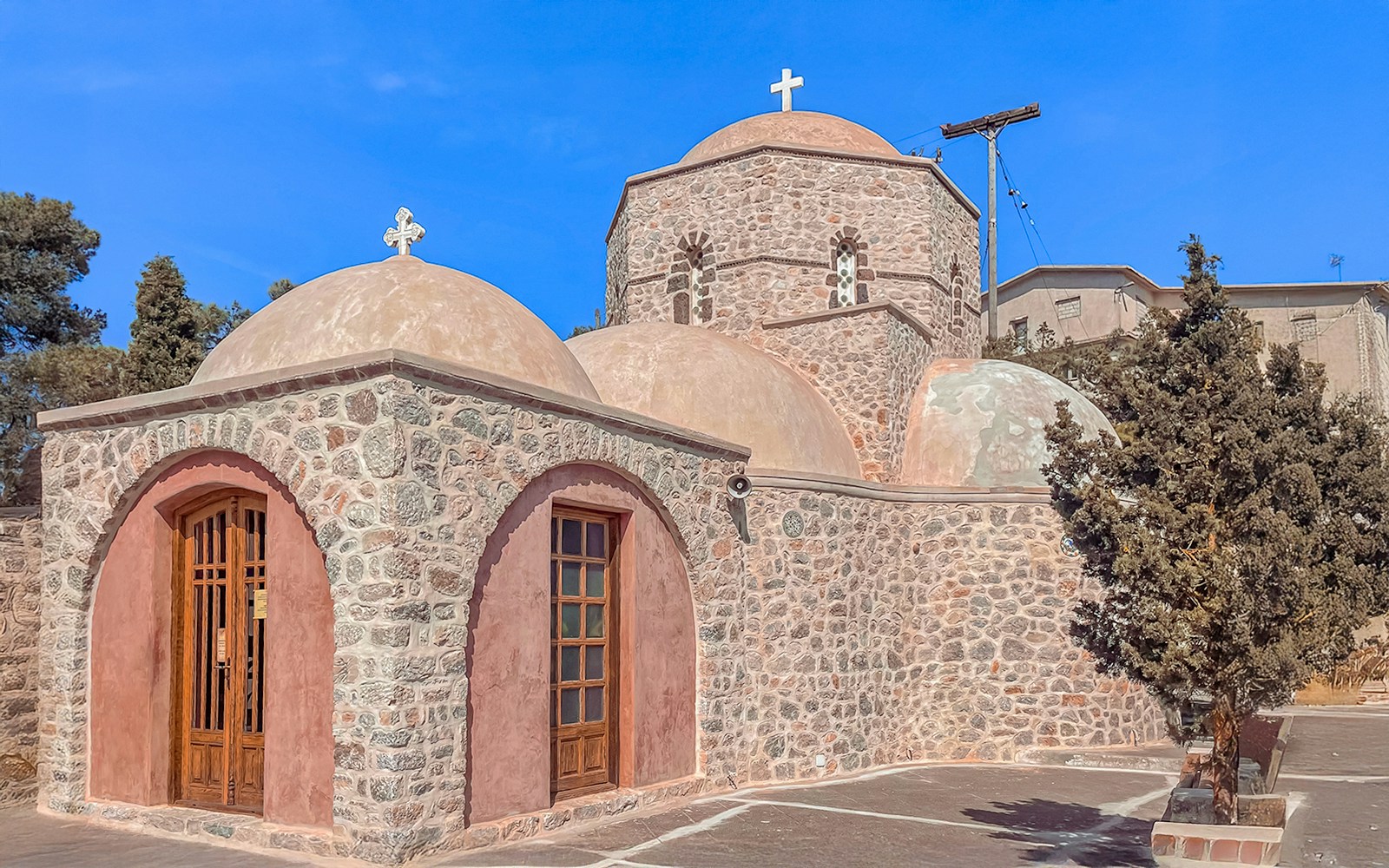It measures roughly 12 km by 7 km, which is about the size of Manhattan Island. That entire space, once solid land, collapsed inward after one of the largest eruptions in recorded history.
Santorini caldera facts
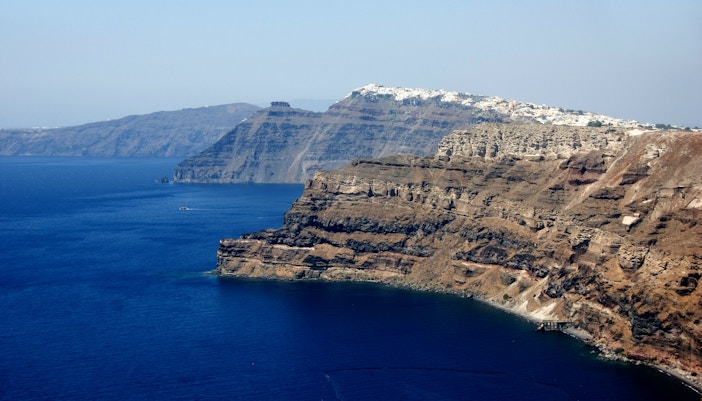
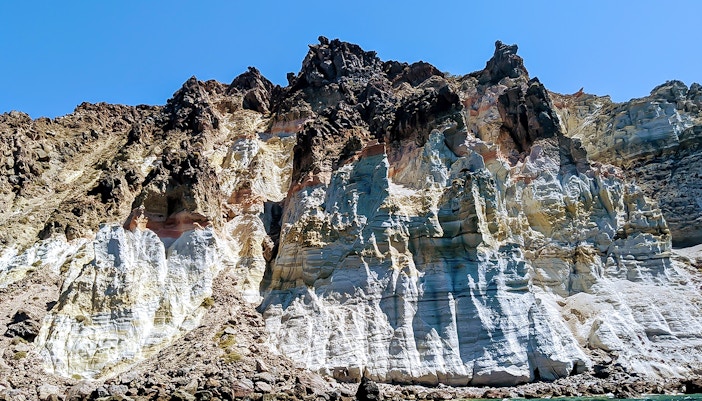
The cliffs surrounding the caldera rise up to 300 meters above sea level, with villages like Oia and Fira perched right at the edge. Meanwhile, the seabed drops to around 385 meters in the center.
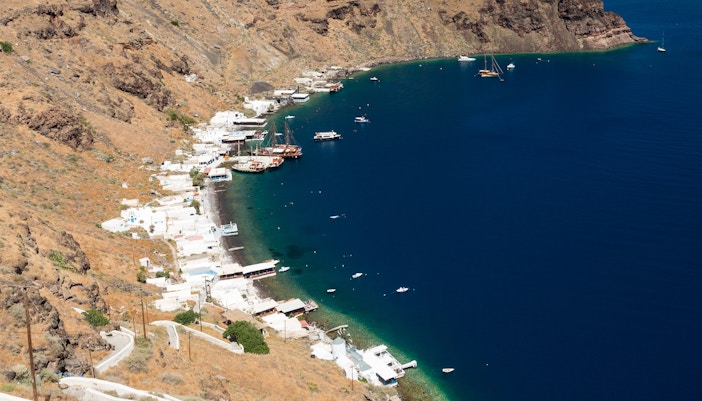
The caldera includes five major landmasses: the main island Thera (Santorini), Therasia, Aspronisi, and the central volcanic islets Nea Kameni and Palea Kameni. These are remnants of a once-whole island blown apart by eruption.
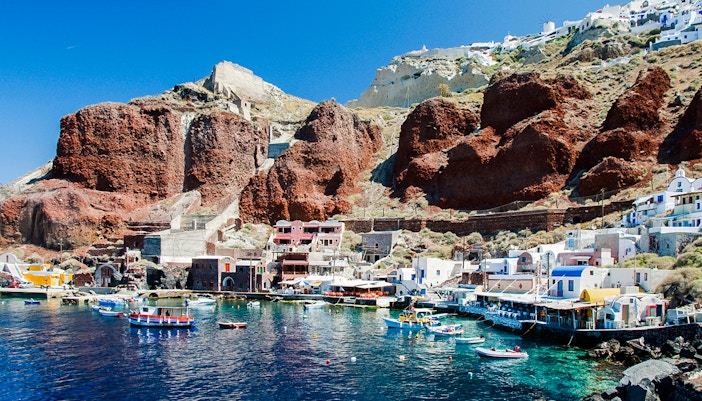
The current caldera was formed during the Minoan eruption, around 1600 BCE, one of the most powerful volcanic events in human history. It reshaped the region and possibly inspired the myth of Atlantis.

Santorini is part of the Hellenic Volcanic Arc, a chain of active and dormant volcanoes stretching across the southern Aegean. The caldera itself still breathes with fumaroles and steam vents on Nea Kameni being signs of ongoing subterranean activity.

Its last recorded eruption was in 1950, a relatively minor event that added to the dome of Nea Kameni. Today, scientists monitor the area closely for signs of future activity.
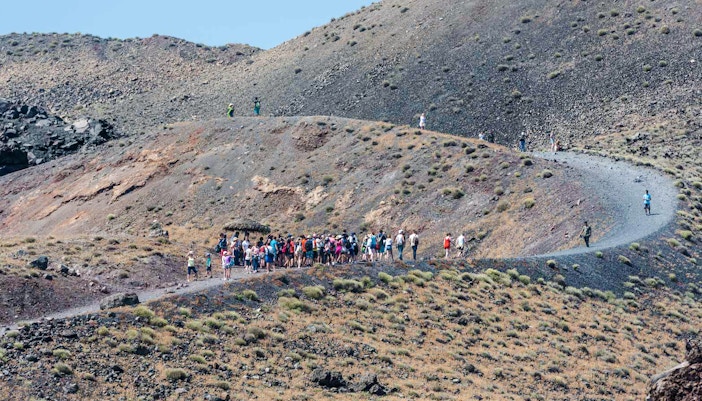
The caldera is a designated “Decade Volcano”, meaning it’s studied in-depth due to its history of destructive eruptions and proximity to human settlements. It’s also a Geological Heritage Site recognized by the IUGS.

The island has experienced at least four major caldera collapses over the last 350,000 years, triggered by large-scale Plinian eruptions (those dramatic, ash-column events that once blackened skies across the region).
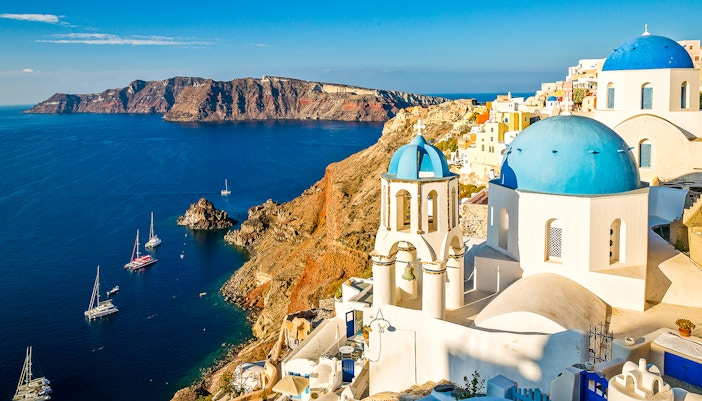
Much of Santorini’s rugged beauty comes from its volcanic origins. The beaches like Red Beach and Perissa get their striking colors from layers of lava, ash, and mineral-rich rock deposited during ancient eruptions.





